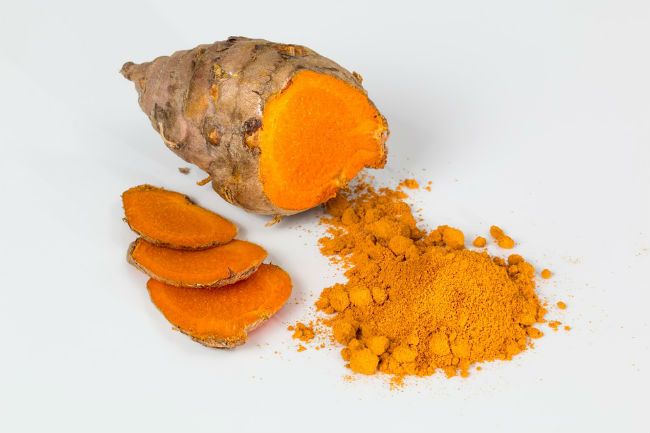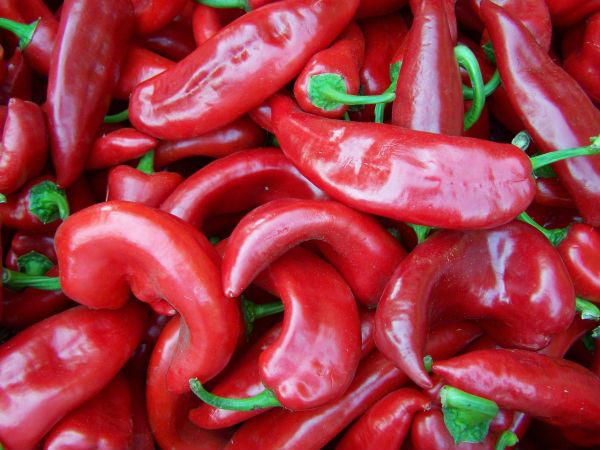As someone who lives with chronic pain, I know how much it can interfere with your daily life.
There are some days where the pain keeps me from concentrating, or even enjoying time with friends.
Pain-relieving medicines are helpful, but they're not a cure, and just give temporary relief.
But there are a few healthy foods that naturally treat all kinds of pain.

Whatever the cause of your pain - chronic conditions, arthritis, or muscle fatigue from exercise - all of these foods will work, because they treat the inflammation at the root of your pain.
Add these 11 healthy foods to your diet and see if they make a difference.
1. Red Grapes

Yes, specifically the red kind.
These small fruit contain a compound called resveratrol that has anti-inflammatory properties.
This compound seems to block pain by stopping cells from responding to the signal that causes inflammation.
Other kinds of grapes also contain powerful antioxidants called polyphenols, but red grapes have the biggest supply.
You can get the same body-protecting antioxidants from peanuts and certain berries.
2. Salmon

Fish isn't for everyone, but this one is a real superfood.
Salmon is loaded with omega-3 fatty acids and calcitonin. They both improve blood flow, which reduces pain caused by inflammation.
It's especially helpful for pain in the joints, the neck and back.
It can also help protect your body from the symptoms of osteoarthritis.
If salmon doesn't suit your taste buds, swap it for tuna, mackerel, or sardines instead.
3. Coffee

Caffeine has been proven to reduce a patient's perception of pain - which is all that matters when a bad headache is keeping you in bed with the lights off.
Coffee, tea, and even chocolate or soda can be effective ways to add caffeine to your diet - but of course there are good reasons not to drink too much soda.
One cup of coffee has been compared to a standard dose of pain-relieving medicine for headaches.
But if you're already a heavy coffee drinker, this natural treatment will be less effective.
4. Mint

Here's an effective pain reliever that you can easily grow in your garden, or even on your windowsill.
There are a few ways to use mint, including chopping it up for recipes that will relieve inflammation.
Small doses of peppermint oil can also relieve stomach trouble, including gas, cramps, and bloating.
Many patients also rub peppermint oil into tired muscles, and to relieve pain from cramps.
5. Pumpkin Seeds

These tiny, chewy seeds are full of magnesium, which can keep migraines at bay.
Like fish, they're also loaded with inflammation-fighting omega-3 fatty acids. Seeds are also rich in fiber, protein, vitamin K and zinc, so you can see why these seeds are super food.
You can get even more magnesium by mixing the seeds with almonds and cashews - just choose the unsalted varieties.
6. Thyme

Thyme is another healthy herb that every gardener should grow.
Compounds in thyme seem to interfere with how a patient experiences pain, by blocking the body's pain receptors.
One study on mice even found the herb was comparable to anti-inflammatory drugs - but more research is needed for humans.
7. Turmeric

A yellow spice used in curries and other Indian dishes, turmeric has always been a staple of traditional Ayurvedic medicine.
One of the spice's main ingredients, curcumin, has been show to possess anti-inflammatory properties.
That makes turmeric - taken either as a tablet or mixed into your food - a natural cure for arthritis pain and osteoporosis symptoms.
Combine it with black pepper and your body will naturally absorb even higher doses of curcumin.
8. Olive Oil

Why do you think the ancient Greeks rubbed this oil on their skin?
It's a natural inflammation buster, that also relieves the pain caused by inflammation.
Doctors already recommend a Mediterranean diet - which is full of olive oil and oily fish - to keep everything from your heart to your brain in good condition.
There's a reason to pay for that extra virgin oil too: it contains oleocanthal, a pain-relieving compound that has been compared to ibuprofen.
Lowering the cooking temperature when you use olive oil will improve the benefits you get from eating it.
9. Ginger

This root is well-known for fighting nausea and soothing an upset stomach. But it also treats inflammation.
Like turmeric, it can be taken as a capsule or mixed into just about any dish.
Ginger is often recommended for joint pain and menstrual cramps, but it can handle chronic pain symptoms too.
10. Chili Peppers

Capsacin rubs are a popular way to treat pain, especially serious nerve pain.
The chemical - found naturally in hot peppers - relieves pain by stimulating nerve endings and blocking pain signals.
Eating the peppers is just as helpful. You get a dose of capsacin, plus a rush of endorphins in your brain from the spice.
These endorphins also block pain signals, giving you a double dose of pain relief.
11. Blueberries

These tasty berries are full of antioxidants, which keep your skin healthy and fight signs of aging.
But those same antioxidants can also naturally relieve your pain.
Blueberries in particular are rich in phytonutrients that relieve inflammation.
Even when they're not fresh, frozen blueberries are just as healthy.
If you want to switch things up, strawberries and oranges contain the same antioxidants.
Will you add any of these foods to your diet?
Here are more surprising health articles:
- 10 common signs you're eating too much salt.
- This simple towel stretch gives instant knee pain relief.
- 10 natural remedies to relieve your gout symptoms.
[H/T: Prevention, Reader's Digest]

